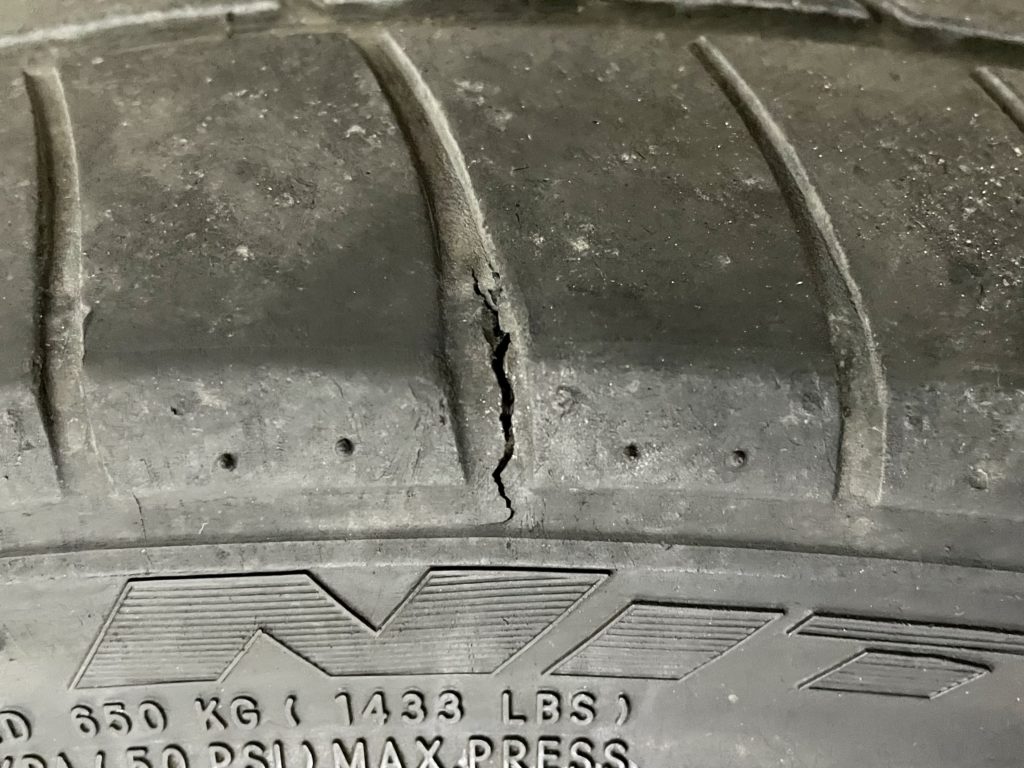When it comes to safety, tires play the most crucial role. You can have the best brakes and the most advanced safety features in the world, yet with bad tires, they mean nothing. Unfortunately, checking your tires isn’t as simple as randomly kicking them for hardness or regularly going to the gasoline station for air – there are specific things you need to watch out for to make sure you’re riding on safe rubber. Read on to find out how to properly check the status and maintain the condition of your tires for safety:
How to check your tires properly:
- Check Tire Pressure
- Check Tire Condition
- Check Tread Depth
- Check Production Date

Check Tire Pressure
Running with the wrong tire pressure can be damaging to your tires – an over-inflated tire might deform and lead to uneven wear down the middle, while an under-inflated tire leads to higher friction and may lead to overheating the tire, eventually blowing it out. This is why it’s important to check them regularly. Use a tire pressure gauge or visit a fuel station to make sure your tires are properly inflated every now and then. If you’re running on stock tires, you can follow the manufacturer’s recommended PSI or tire pressure located in the owner’s manual or take a peek at the sticker just inside the driver’s side door.

Check Tire Condition
This is very important especially before going for a long drive. You should inspect your tires for any damages that might require their replacement. Inspect each tire carefully for any cuts, scrapes, punctures, bulges, bumps, or cracks. If there is something concerning, have a tire service professional take a closer look.
Here in the Philippines, the roads are a nightmare for tires. Potholes and broken roads are everywhere, it’s just impossible to avoid them. You may not notice it, but your tires could have some damage already. This is why it’s important to check them regularly, whether they are new or not.

Check Tread Depth
Tread is the groove around the tire that comes into contact with the ground. One of the main purposes of the grooves is to expel water away to avoid hydroplaning. As you use your tires more and more, these grooves become thinner. The thinner they are, the more dangerous they are in wet conditions.

In some countries, the legal limit for tread depth is 1.6mm. Anything less is illegal for use on public roads. Fortunately, there are many convenient ways to check this. One way is through the tire’s built-in tread wear indicators (TWI). You can find them in the main grooves of the tire, they are evenly spaced in the tire tread so you can make a visual reading. If the TWI is on the same level as the tread, then the tire should be replaced already.
Another way is by using a one-peso coin (piso). Simply insert the coin into the tire’s groove with Jose Rizal’s head facing upright, if the year at the bottom of the coin is partially covered, then your tire is still in good condition.

Check Production Date
Tires are in their best condition for the next 5 years from their production date. Although you can keep them for a few more years, that would require more frequent inspection. Just take note that you should not keep them for more than 10 years. Tires naturally degrade over a period of time because they’re made of rubber. When a tire ages, it loses the protective resin which keeps the rubber from oxidizing and drying out. They eventually become brittle and start to develop cracks. Sooner or later, they will begin to break apart, which is something you would not want.
To determine the age of your tires, just look at the DOT stamping on the sidewall. At the end of the DOT stamping, there will be a 4-digit number indicating the date code. The first two numbers are the week and the last two are the year. For example, 0721 would tell you that the tire was manufactured in the 7th week of 2021.


































































